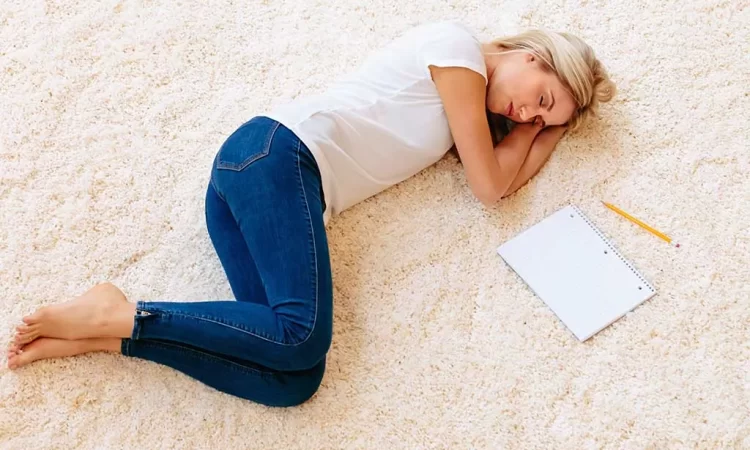Many mattress brands require their customers to use a foundation when sleeping on the floor; failing to comply could void your warranty and cause moisture-induced mildew and mold growth on your floors. Furthermore, regular floor cleanings should also help avoid moisture retention that leads to mildew growth on them.
Sleeping on the floor brings you closer to the earth, helping improve posture while giving access to cooler air that has incredible benefits for the body.
It’s cheaper
By forgoing bed frames and foundations, you’ll save yourself considerable sums of money – especially if shopping on a tight budget!
An alternative option for creating an inviting bedroom aesthetic is placing your mattress directly on the floor, especially if you live in a small space or want an open feel in your bedroom.
Sleeping directly on the ground may be uncomfortable and put your mattress at increased risk for infestation by bed bugs, ants, fleas, spiders and other pests like mold or mildew growth if there’s no ventilation; mold can even form, potentially harming your health if you have allergies and potentially nullifying its warranty; box springs/foundation ensure enough air flow throughout the night with their slatted supports that help ensure adequate airflow is being supplied throughout its usage.
It’s easier to clean
Your mattress’s underbelly is often home to dust bunnies, spare socks and other lost items that become trapped beneath it, potentially trapping dirt and moisture and leading to mold growth. Sleeping without a foundation exposes you more directly to dust mites and mildew that could irritate sensitive skin conditions or respiratory ailments.
Similar to memory foam mattresses, lacking adequate airflow around your mattress may lead to it feeling overheated.
Foam mattresses tend to retain heat more than hybrid or innerspring models, creating an unpleasant sleep surface. A mattress on the floor also makes it easier for bed bugs and other pests to enter than one 12″ higher on a foundation; to combat this problem, consider raising it up onto a slatted foundation and leaning it against walls or other sturdy supports at least once every week in order to air out your mattress and improve ventilation.
It’s more comfortable
Avoiding mattress frames has several advantages over having one: firstly it contributes to a more minimalist aesthetic in smaller spaces, secondly it may make sleeping more comfortable.
A bed on the floor may provide support and reduce back pain, but may not be ideal if you have mobility issues or chronic health conditions that limit mobility. Low beds can also make getting in and out difficult for older adults.
Sleeping directly on the floor may obstruct air circulation and buildup heat, leading to mold and mildew growth and increasing risk of dust mites, spiders and insects such as bedbugs. To minimise risk, ensure your room has proper ventilation and that you regularly clean your mattress; to reduce further risks if you suffer from allergies or asthma it may worsen symptoms by sleeping directly on the floor; taking short naps until able to sleep for longer periods might help ease into it more gradually.
It’s safer
Mattress manufacturers usually specify that their mattress must be placed on a frame or base to fulfill its warranty and avoid damage to it, and sleeping directly on the floor voids your warranty and reduces airflow, leading to mold growth and unpleasant odors.
Some individuals report experiencing back pain when sleeping on the floor, possibly as a result of spinal alignment and pressure points in their bodies. A pillow under their head can help alleviate these effects.
Children sleeping on the floor have less risk of rolling out of bed and this can foster independence. Parents must ensure that the room is free from toys, choking hazards and other potential dangers; in an emergency they should also be able to call out for their parent and use the bed during day naps to help their child adjust.

